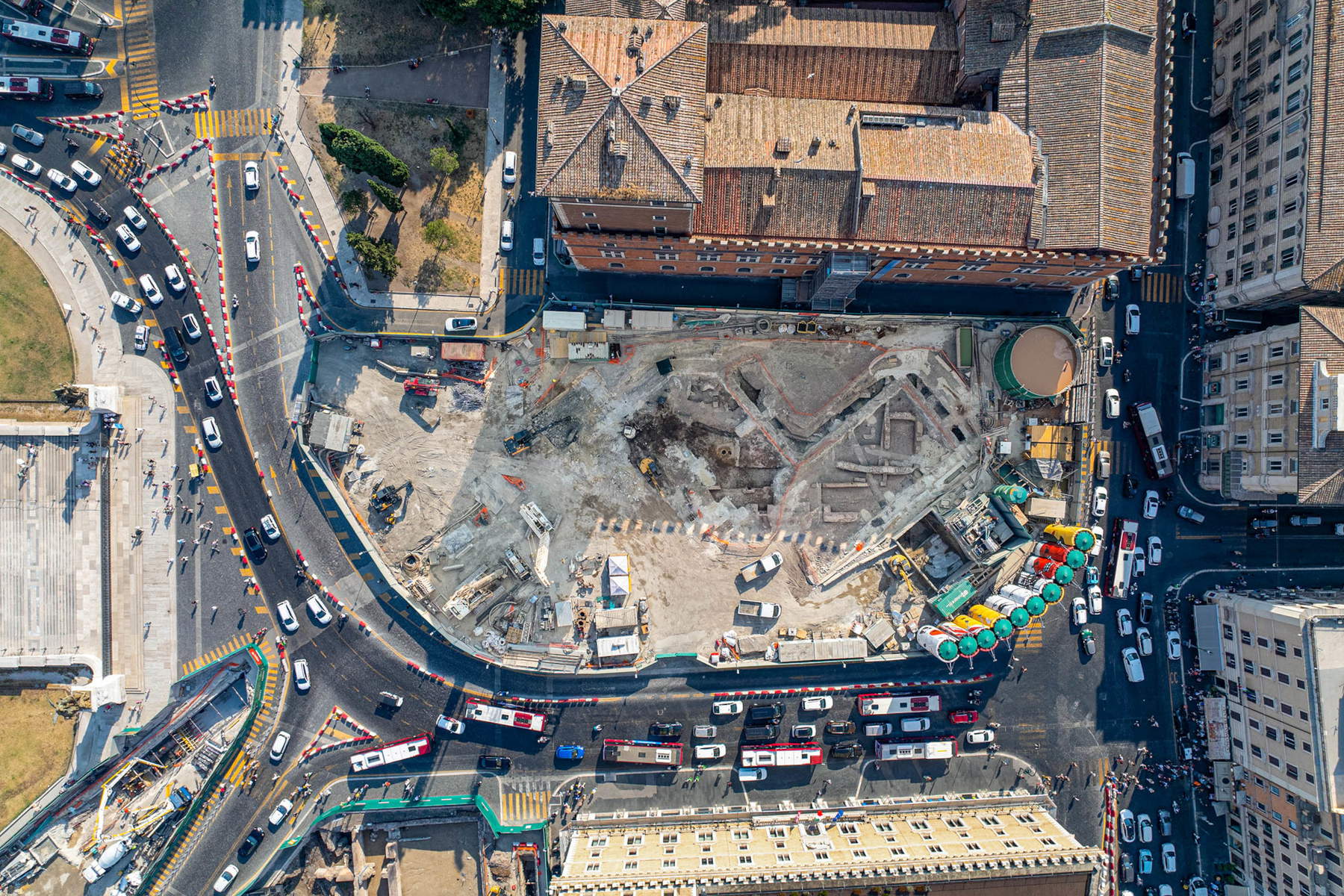At the construction site for the Piazza Venezia station of the Metro C line in Rome, under the scientific direction of the Special Superintendent of Rome, structures from the Roman and medieval ages have emerged.
“Once again the construction of a metro station makes us rediscover the past of our city,” explains Daniela Porro, Special Superintendent of Rome. “It is in the sumptuous palimpsest of various epochs that is returning before our eyes and will have to be made the most of in the future station that lies the great fascination of this excavation, which the Superintendency is conducting as part of the work for the construction of Line C, commissioned by Roma Metropolitane, on behalf of Roma Capitale and carried out by the Metro C company, led by Webuild and Vianini Lavori.” Evidence has emerged of a multi-story complex dating from the late Republican and early Imperial periods, probably with a residential and commercial function, the typology of which should be traced back to the insulae, or residences for the working classes in Imperial-era Rome. The Roman structures were located close to the beginning of the ancient Via Flaminia, the route of which has been found from the medieval period: at this stage the road is no longer made of paving stones, which are probably at a lower level, but of several layers of beaten earth, which over time were superimposed when the previous one had deteriorated.
To the Middle Ages date some of the limestone, the simple kilns used to turn marble into quicklime, also placed on the edge of the Flaminian Way to facilitate the transportation of ore blocks.
According to the scientific head of the excavation, Soprintendenza archaeologist Marta Baumgartner: “The discovery of housing structures from the Roman period represents an extraordinary opportunity to learn about the historical topography of central Rome. These remains, which can be traced back to residential buildings of the imperial age, contribute to enriching the urban framework of the area by inserting the large known monuments into the residential fabric.”
All the constructions that followed one another in the various eras, including the modern buildings demolished for the enlargement of Piazza Venezia between the nineteenth and twentieth centuries, have incorporated the earlier structures, creating a whole of complex interpretation. Only the continuation of the excavation, analysis and study of the finds will allow for a complete picture of the findings also for their future relocation.
 |
| Rome, Roman and medieval structures emerge from the construction site of the Venezia station of the Metro C line |
Warning: the translation into English of the original Italian article was created using automatic tools. We undertake to review all articles, but we do not guarantee the total absence of inaccuracies in the translation due to the program. You can find the original by clicking on the ITA button. If you find any mistake,please contact us.